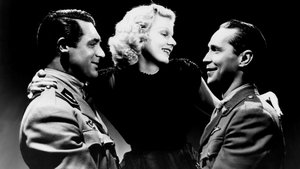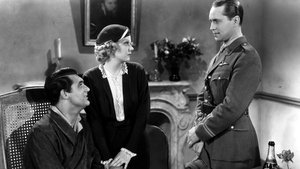Contact: info@alwanfilm.com
Video Sources 0 Views
- Suzy


Synopsis
Table of Contents
ToggleReview: Suzy 1936 Colorized – A Timeless Romance Blooms Amidst the Shadows of War

Introduction
“Suzy” (1936) emerges from the golden age of Hollywood as a poignant tale of love and resilience set against the backdrop of World War I. In this article, we will embark on a journey through the enchanting world of “Suzy,” exploring its significance as an early colored film and its enduring impact on the landscape of romantic cinema.
Check The Full Colorized Movies List
Check Our Colorized Movies Trailer Channel
Understanding Suzy 1936 Colorized: Director, Cast, and Genre
Directed by the visionary George Fitzmaurice, “Suzy” (1936) showcases his knack for crafting compelling narratives and evocative visuals. The film stars the luminous Jean Harlow in the titular role, alongside Cary Grant and Franchot Tone, whose on-screen chemistry ignites the screen with passion and longing. Blending elements of romance, drama, and suspense, “Suzy” (1936) transports viewers to a world where love blossoms amidst the chaos of war.
Exploring the World of Suzy 1936 Colorized: Plot and Characters
At its heart, “Suzy” (1936) follows the journey of a beautiful American chorus girl, played by Jean Harlow, who finds herself embroiled in a dangerous game of espionage and intrigue during World War I. As she navigates the treacherous waters of love and loyalty, she must confront the ghosts of her past and the uncertainties of her future. Along the way, she encounters a cast of colorful characters, each with their own secrets and motivations, who will shape her destiny in ways she never imagined.
The Art of Film Colorization
Film colorization serves as a transformative tool that breathes new life into classic movies, allowing audiences to experience familiar stories in vibrant hues. By digitally adding color to black and white films, colorization enhances the visual appeal of cinematic masterpieces and invites viewers to immerse themselves in the rich tapestry of their worlds.
Early Colored Films: A Brief History
The history of colored films stretches back to the early days of cinema, with filmmakers experimenting with various techniques to add color to their creations. From hand-tinted frames to early Technicolor processes, the evolution of colored film has been marked by innovation and creativity, paving the way for the development of modern colorization techniques that continue to captivate audiences to this day.
Suzy 1936 and Its Early Colored Version
The decision to release “Suzy” (1936) in a colorized format was met with both excitement and skepticism. While some welcomed the opportunity to experience the film in vibrant color, others expressed concerns about the potential impact on its visual aesthetic. Nevertheless, the early colored version of “Suzy” (1936) offers viewers a fresh perspective on the timeless tale of love and sacrifice, enhancing its emotional resonance and captivating audiences with its luminous beauty.
The Debate Over Film Colorization
The debate over film colorization remains a contentious issue in the world of cinema, with proponents arguing that it revitalizes classic movies for modern audiences and detractors maintaining that it compromises the artistic integrity of the original work. As filmmakers and audiences grapple with the implications of colorization, they are left to ponder the merits and drawbacks of this controversial practice.
Examining Suzy 1936 as an Early Colored Film
As with any colorized classic, the impact of colorization on “Suzy” (1936) is a matter of personal interpretation. Some may argue that it enhances the film’s visual appeal and immerses viewers in its world, while others may feel that it detracts from the stark beauty of the original black and white version. Regardless of one’s stance on the issue, there’s no denying the enduring power of “Suzy” (1936) as a timeless romance that continues to captivate audiences with its heartfelt performances and sweeping cinematography.
Influence and Legacy: Suzy 1936 Colorized’s Impact on Cinema
“Suzy” (1936) has left an indelible mark on the world of cinema, inspiring countless filmmakers and captivating audiences with its timeless tale of love and sacrifice. From its unforgettable performances to its breathtaking visuals, the film continues to resonate with viewers of all ages, reaffirming its status as a beloved classic of the romantic drama genre.
Director’s Cinematic Legacy: Beyond Suzy 1936 Colorized
George Fitzmaurice’s influence extends far beyond “Suzy” (1936), with a diverse body of work that continues to captivate audiences around the globe. From “The Son of the Sheik” to “The Hurricane,” Fitzmaurice’s films are celebrated for their compelling narratives and evocative visuals, solidifying his legacy as one of the preeminent directors of Hollywood’s Golden Age.
Themes Explored inSuzy 1936 Colorized
“Suzy” (1936) explores a myriad of themes, from love and sacrifice to duty and honor in the face of war. Through its richly drawn characters and poignant storytelling, the film invites viewers to ponder the complexities of the human heart and the enduring power of love to overcome even the greatest of obstacles.
Reception and Controversy Surrounding Suzy 1936 Colorized
Upon its release, “Suzy” (1936) received widespread critical acclaim, with many praising its heartfelt performances, gripping storyline, and breathtaking visuals. However, the decision to release the film in a colorized format sparked debate among purists, reigniting the age-old discussion surrounding film preservation and artistic integrity. Despite the controversy, “Suzy” (1936) remains a beloved classic that continues to captivate audiences with its timeless charm and timeless appeal.
Where to Watch Suzy 1936 Colorized Online
For those eager to experience the timeless magic of “Suzy” (1936), the film is readily available on popular streaming platforms such as Netflix, Amazon Prime, and Hulu. Whether you choose to watch it in its original black and white format or the early colored version, “Suzy” (1936) promises to transport you to a world of romance and adventure, where love conquers all and the human spirit shines brightest in the darkest of times.
FAQs About Suzy 1936 Colorized
Q: Is “Suzy” (1936) based on a true story? A: No, “Suzy” (1936) is a fictional tale crafted by screenwriter Dorothy Parker, who drew inspiration from various sources to create a compelling narrative set against the backdrop of World War I.
Q: Who are the main actors in “Suzy” (1936)? A: “Suzy” (1936) stars the luminous Jean Harlow in the titular role, alongside Cary Grant and Franchot Tone, whose on-screen chemistry ignites the screen with passion and longing.
Q: What awards did “Suzy” (1936) win? A: While “Suzy” (1936) did not win any major awards, it received critical acclaim for its heartfelt performances and captivating storytelling.
Q: Why was “Suzy” (1936) released in a colorized format? A: The decision to release “Suzy” (1936) in color was made to introduce the film to a new generation of viewers and enhance its visual appeal for modern audiences. While the choice to colorize the film sparked debate among purists, it ultimately allowed “Suzy” (1936) to reach a wider audience and ensure its continued relevance in the annals of cinematic history.
Conclusion
“Suzy” (1936) stands as a timeless testament to the enduring power of love and resilience in the face of adversity. Whether experienced in its original black and white format or the early colored version, the film continues to captivate audiences with its heartfelt performances, gripping storyline, and breathtaking visuals. As we journey through the shadows of war and the depths of the human heart, let us remember the timeless lessons of courage, love, and sacrifice that “Suzy” (1936) imparts, reminding us of the indomitable spirit of the human soul.













